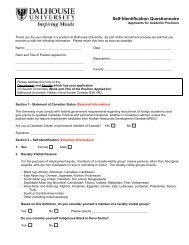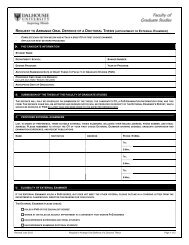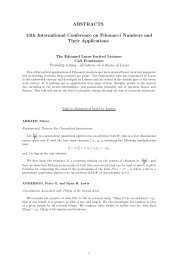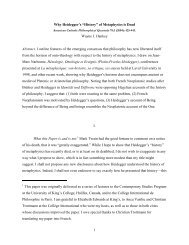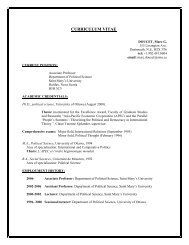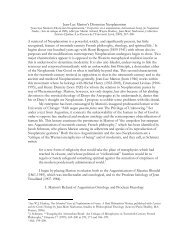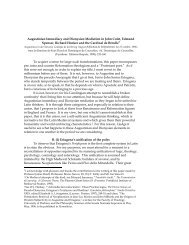Preparing for University Calculus - Math and Computer Science
Preparing for University Calculus - Math and Computer Science
Preparing for University Calculus - Math and Computer Science
You also want an ePaper? Increase the reach of your titles
YUMPU automatically turns print PDFs into web optimized ePapers that Google loves.
3.4 FunctionsYou should underst<strong>and</strong> the concept of “function” <strong>and</strong> “inverse function” <strong>and</strong> knowhow to compute the composition of two or more functions. You should be able todetermine the range <strong>and</strong> domain of a simple function. This will be important <strong>for</strong>underst<strong>and</strong>ing the Chain Rule, various methods of integration, <strong>and</strong> limits.Examples:1. Find the domain of the functions defined by:(a) f(x) = 1x 2 −1(b) g(x) = √ 4 − xSolution(a) The domain of f(x) = 1x 2 −1 is the set of all values of x such that x2 −1 ≠0;that is x ≠ ±1 orx ∈{(−∞, −1) ∪ (−1, 1) ∪ (1, ∞)}(b) The domain of g(x) = √ 4 − x is the set of all values of x such that4 − x ≥ 0; that is x ≤ 4orx ∈ (−∞, 4].2. If f(x) =3x + 5, findSolutionf(x + h) − f(x)hf(x + h) − f(x)h== 3h h[3(x + h)+5]− [3x +5]h= 3=3x +3h +5− 3x − 5h3. If f(x) = √ x − 1 <strong>and</strong> g(x) =x 2 , find:(a) f(g(x)) (b) g(f(x))Solution(a) f(g(x)) = f(x 2 )= √ x 2 − 1; this has domain (−∞, −1] ∪ [1, ∞).(b) g(f(x) =g( √ x − 1) = ( √ x − 1) 2This is x − 1 on the domain [1, ∞) but is undefined elsewhere.16



